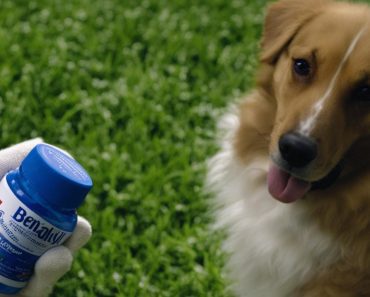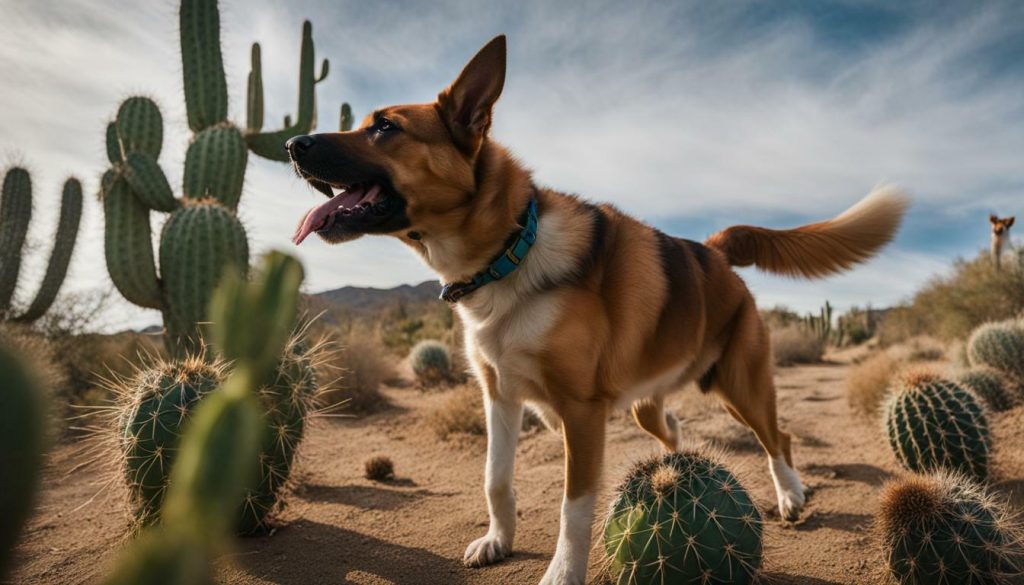
As a pet parent, you may wonder if feeding cactus to your furry friend is safe. While technically safe, it is not recommended to do so due to the potential risks involved. Feeding cactus to dogs can lead to injuries to the spines and cause stomach upset due to the sap. Additionally, some cacti are toxic to dogs and can have hallucinogenic effects.
It is essential to take precautions regarding cactus consumption and dogs. If your dog accidentally consumes cactus, it is best to seek veterinary assistance. A vet can safely remove any spines and provide further treatment if necessary. Most cacti are not poisonous, but keeping them out of your dog’s reach is crucial due to the sharp spines.
- Feeding cactus to dogs is not recommended due to potential injury and stomach upset.
- Some cacti are toxic to dogs and may have hallucinogenic effects.
- If your dog consumes cactus, seek veterinary assistance for spine removal and further treatment.
- Keep cacti out of your dog’s reach to avoid injuries from sharp spines.
- Other holiday plants that are toxic to dogs include mistletoe, holly, daffodil, lily, amaryllis, yew, snowdrop, laurel, and poinsettia.
Potential Risks of Dogs Eating Cactus
While cactus may seem harmless, there are potential risks involved when dogs consume this plant. One of the main concerns is the presence of sharp spines that can cause injury in the mouth, throat, or gastrointestinal tract if ingested. These spines can be difficult to remove and may require veterinary intervention to ensure the dog’s safety.
Another risk is the sap or juice found in some cacti, which can cause stomach upset and diarrhea in dogs. The sap may also contain toxic substances that can be harmful if ingested. Therefore, keeping cacti out of a dog’s reach is crucial to avoid accidental consumption.
While most cacti are not poisonous, certain varieties can harm dogs. Some examples include peyote cactus, cholla, Peruvian torch cactus, and San Pedro cactus. Ingesting these toxic cacti can lead to symptoms such as vomiting, diarrhea, tremors, and even hallucinations. If you suspect your dog has consumed any of these toxic cacti, it is important to seek immediate veterinary care for proper diagnosis and treatment.
It is worth noting that Christmas cactuses are not toxic to dogs. However, it is always best to be cautious and keep all plants, including cacti, out of your pet’s reach to prevent potential hazards. Additionally, it is not only cacti that pet owners should be mindful of, but also other holiday plants that can be toxic to dogs, such as mistletoe, holly, daffodil, lily, amaryllis, yew, snowdrop, laurel, and poinsettia. When introducing new plants to your home, ensure they are safe for your furry companions.
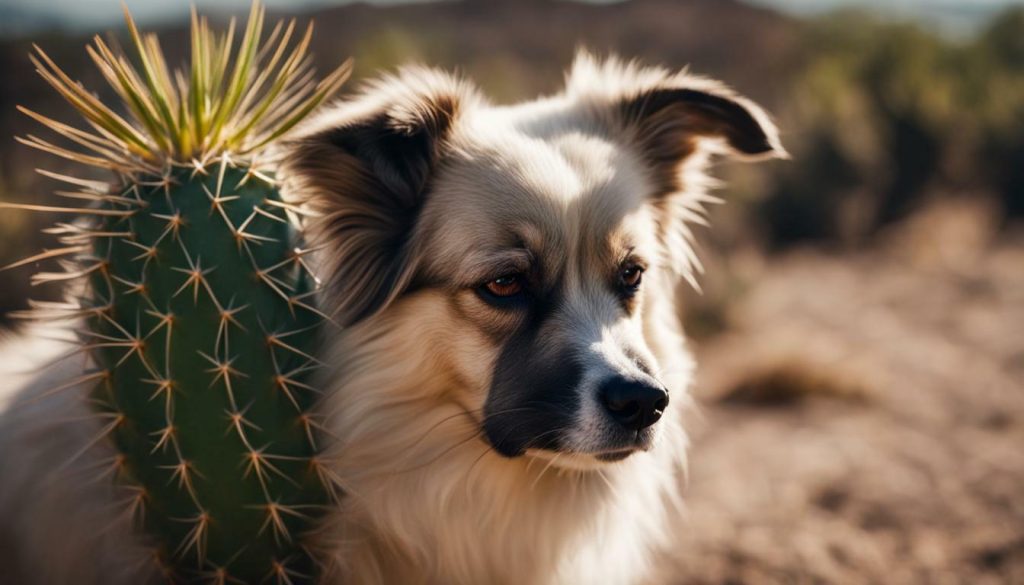
| Common Toxic Cacti | Potential Symptoms |
|---|---|
| Peyote cactus | Vomiting, diarrhea, hallucinations |
| Cholla | Abdominal pain, skin irritation |
| Peruvian torch cactus | Stomach upset, tremors |
| San Pedro cactus | Diarrhea, hallucinations, increased heart rate |
It’s important to remember that while dogs may be curious about cacti, it’s best to err on the side of caution and prevent them from accessing these plants. If you suspect your dog has consumed cactus or is showing any signs of illness after interacting with cacti, contact your veterinarian immediately for guidance and proper care.
Cactus Toxicity in Dogs
It is important for pet owners to be aware of the signs of cactus toxicity in dogs. While most cacti are not poisonous, some varieties can cause harm to our canine companions. If your dog has ingested cactus, monitoring them closely for any adverse reactions is crucial.
Signs of cactus toxicity in dogs can vary depending on the specific plant and the amount consumed. Common symptoms may include vomiting, diarrhea, drooling, lethargy, loss of appetite, and abdominal pain. In severe cases, dogs may experience difficulty breathing, tremors, seizures, or collapse. You must seek immediate veterinary assistance if you suspect your dog has ingested a toxic cactus.
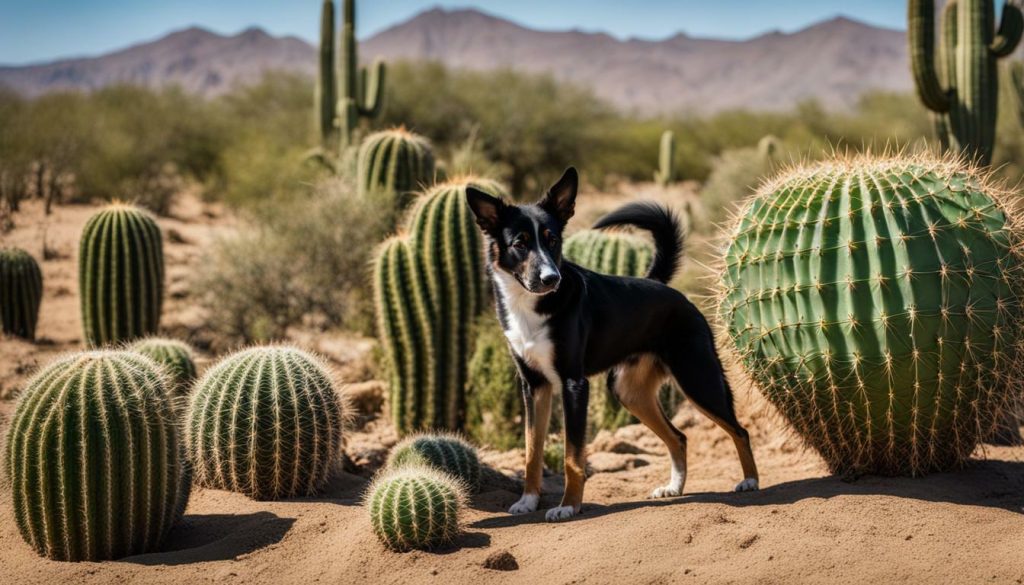
While some cacti may only cause mild gastrointestinal upset, others can have more serious consequences. For example, peyote cactus, cholla, Peruvian torch cactus, and San Pedro cactus are toxic to dogs and can have hallucinogenic effects. Therefore, it’s crucial to be cautious and keep these plants out of your pet’s reach.
| Toxic Cacti | Hallucinogenic Effects |
|---|---|
| Peyote cactus | Yes |
| Cholla | No |
| Peruvian torch cactus | Yes |
| San Pedro cactus | Yes |
It’s always better to err on caution regarding your dog’s health. If you suspect cactus toxicity or notice unusual symptoms, seek prompt veterinary attention. Your veterinarian can provide the necessary treatment and support to ensure your furry friend’s well-being.
Cactus Spines and Dog Safety
The sharp spines found on cacti can be a hazard for dogs, and taking measures to keep them safe is crucial. Dogs are naturally curious creatures, and their inquisitive nature can lead them to explore plants, including cacti, which can result in painful encounters with the spines.
When it comes to cacti and dogs, prevention is key. Pet owners should ensure that cacti are placed in inaccessible areas to their furry friends. Keeping cacti on high shelves or securely fenced-off areas can help prevent accidental contact with the spines. Additionally, it is important to regularly inspect the environment to ensure no fallen spines are present, as these can still cause injuries.
If a dog comes into contact with cactus spines, handling the situation with care is essential. Carefully remove any spines embedded in the dog’s fur or skin using gloves for protection. If the spines are deeply embedded, or there are signs of infection or discomfort, it is best to seek veterinary assistance. Veterinarians have the expertise to remove spines and provide appropriate treatment, if necessary, safely.
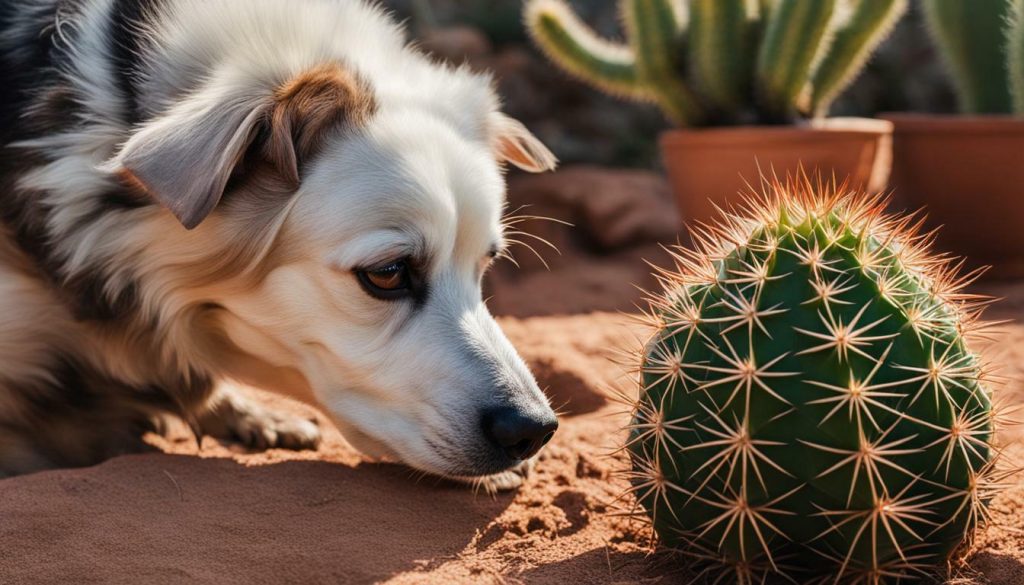
While most cacti are not poisonous to dogs, it is important to be aware of the potential dangers that specific types of cacti may pose. Some cacti, such as peyote cactus, cholla, Peruvian torch cactus, and San Pedro cactus, are toxic to dogs and can have hallucinogenic effects. Keeping these types of cacti out of a dog’s reach is crucial to prevent accidental ingestion.
It is also worth noting that cactus sap, although not toxic in small amounts, can cause stomach upset if ingested by dogs. Therefore, feeding cacti to dogs as a treat or part of their diet is generally not recommended.
| Table: Toxic Holiday Plants for Dogs |
|---|
| Mistletoe |
| Holly |
| Daffodil |
| Lily |
| Amaryllis |
| Yew |
| Snowdrop |
| Laurel |
| Poinsettia |
Aside from cacti, other holiday plants can be toxic to dogs. Mistletoe, holly, daffodil, lily, amaryllis, yew, snowdrop, laurel, and poinsettia are among the plants that pet owners should be cautious about. Keeping these plants out of a dog’s reach is essential to prevent accidental ingestion.
In conclusion, while dogs can technically eat cactus, it is not recommended due to the potential risks associated with cactus spines and sap. It is best to keep cacti out of a dog’s reach and promptly remove spines if accidental contact occurs. If any concerns arise, it is wise to consult a veterinarian for further guidance and treatment if necessary.
Digestive Health and Cactus for Dogs
Cactus may offer some benefits in improving a dog’s digestive health. The presence of certain compounds in cacti, such as fiber, can aid in promoting regular bowel movements and preventing constipation. Additionally, cactus is known to have hydrating properties, which can benefit dogs with gastrointestinal issues.
One of the key components found in cacti is mucilage, a sticky substance that helps to soothe and protect the digestive tract. This can be particularly helpful for dogs that have sensitive stomachs or are prone to digestive upset. The mucilage in cactus acts as a natural barrier, reducing inflammation and calming the digestive system.
It is important to note that while cactus can be beneficial for a dog’s digestive health, it should be introduced in moderation and under the guidance of a veterinarian. Some dogs may have sensitivities or allergies to certain plants, including cactus. Therefore, it is always best to consult a professional before adding cactus to your dog’s diet.
| Cactus Benefits for Digestive Health: |
|---|
| 1. Promotes regular bowel movements |
| 2. Provides hydration for the digestive system |
| 3. Soothes and protects the digestive tract |
| 4. Reduces inflammation |
In conclusion, cactus can benefit a dog’s digestive health. However, it is crucial to exercise caution and consult with a veterinarian to ensure the safety and suitability of cactus consumption for your specific dog. Proper moderation and monitoring are essential for a healthy and balanced diet.
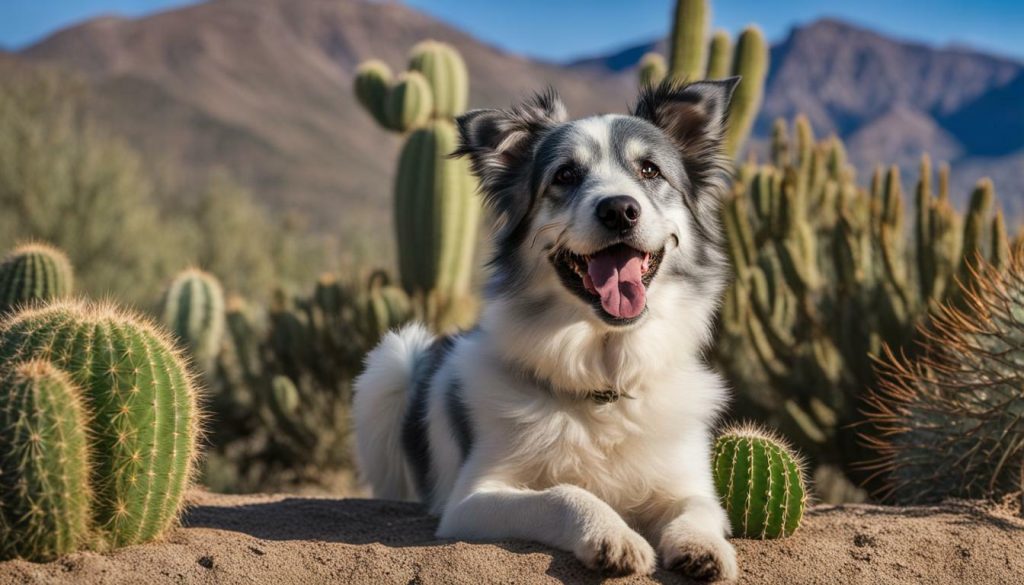
Certain varieties are safe for dogs if you are considering adding cacti to your home. It’s important to select cacti that do not have sharp spines or toxic properties that can harm your furry friend. Here are some dog-friendly cactus varieties that you can safely introduce into your pet’s environment:
- Echinopsis – Also known as Easter lily cactus, has smooth, rounded stems and colorful flowers. It is non-toxic to dogs and adds a beautiful touch to any indoor or outdoor space.
- Opuntia microdasys – Commonly known as bunny ears cactus, this variety has flattened pads that resemble bunny ears. It is safe for dogs and adds a unique visual appeal to your cactus collection.
- Mammillaria – This dwarf cactus variety is safe for dogs and has round stems covered in small spines. It comes in various sizes and shapes, making it a versatile addition to your home.
Remember to keep these cacti out of your dog’s reach, as even safe varieties can cause discomfort if ingested in large quantities. Additionally, ensure that the potting soil used for cacti does not contain harmful fertilizers or chemicals that could harm your pet’s health.
By selecting dog-friendly cactus varieties and taking necessary precautions, you can create a safe and visually appealing environment for your cacti and furry companion.
Table: Safe Cactus Varieties for Dogs
| Cactus Variety | Description |
|---|---|
| Echinopsis | Smooth rounded stems and colorful flowers |
| Opuntia microdasys | Flattened pads resembling bunny ears |
| Mammillaria | The round stems covered in small spines |
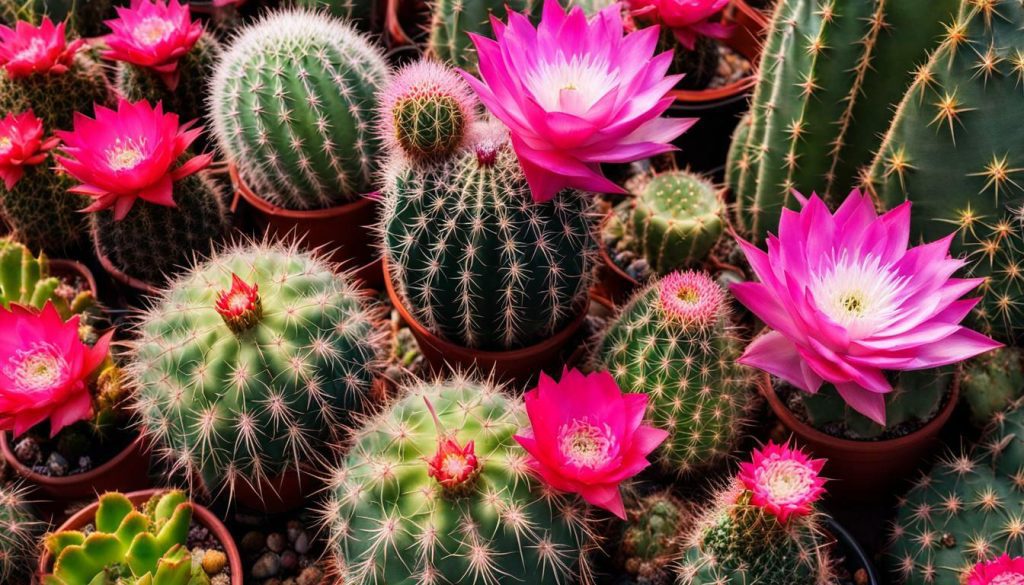
With the right cacti and proper care, you can enjoy the beauty of these desert plants while keeping your furry friend safe. Always research and double-check the safety of plants before introducing them into your home, and consult with a veterinarian if you have any concerns about your dog’s well-being.
Cautions for Dog Owners
To ensure the well-being of your furry friend, it is essential to take certain precautions when it comes to cactus consumption. While dogs can technically eat cactus, it is important to be aware of its potential risks and dangers.
First and foremost, cacti have sharp spines that can cause injury to your dog’s mouth, throat, or paws if they attempt to chew on or play with the plant. These spines can be difficult to remove and may require medical intervention to avoid further complications. Additionally, the sap of certain cacti can cause stomach upset and gastrointestinal issues in dogs.
Some cacti are also toxic to dogs and can have hallucinogenic effects, harming their overall health. Keeping cacti out of your dog’s reach is crucial to prevent accidental ingestion. Examples of toxic cacti include peyote cactus, cholla, Peruvian torch cactus, and San Pedro cactus. On the other hand, Christmas cactuses are safe for dogs.
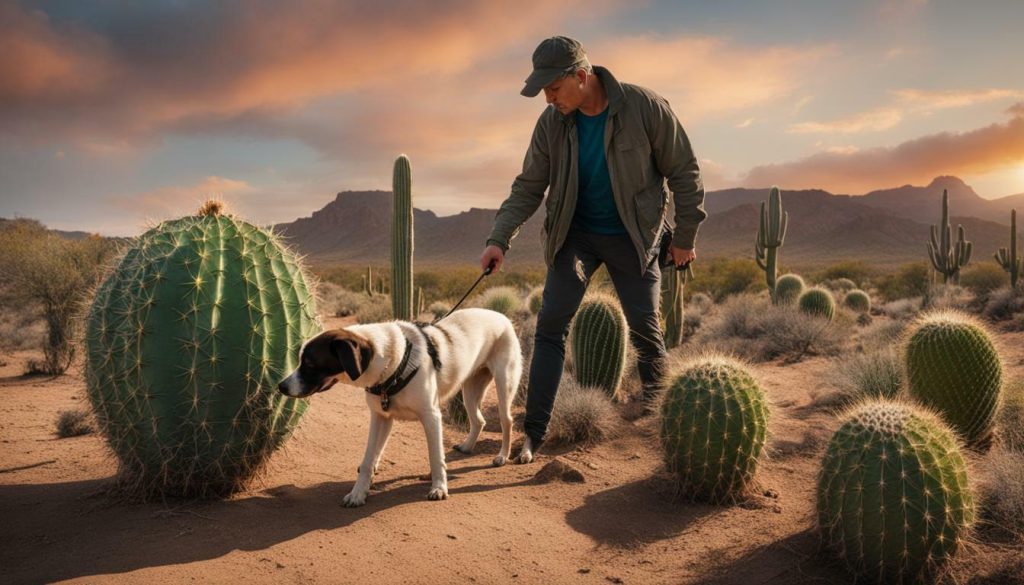
It is not only cacti that pose a risk to your dog’s well-being during the holiday season. Other holiday plants, such as mistletoe, holly, daffodil, lily, amaryllis, yew, snowdrop, laurel, and poinsettia, can also be toxic and should be kept away from your furry friend.
When introducing new plants into your home, it is important to research their potential toxicity to dogs and ensure they are safely stored out of your pet’s reach. Taking these precautions can help keep your dog happy and healthy during the holiday season and beyond.
Dangerous Cacti for Dogs
While most cacti are not poisonous to dogs, some specific varieties can be dangerous if ingested. These cacti contain toxins that can cause various adverse effects on a dog’s health. It is important to be aware of these toxic cacti to ensure the safety of your furry friend.
1. Peyote Cactus: Peyote cactus, also known as Lophophora williamsii, contains the psychoactive compound mescaline. Ingestion of peyote cactus can lead to hallucinogenic effects in dogs, including disorientation, altered behavior, and potential harm.
2. Cholla: Cholla cactus, scientifically known as Opuntia spp., is covered in sharp spines called glochids. These tiny spines can easily become embedded in a dog’s paws, mouth, or skin, causing pain, irritation, and potential infection if not promptly removed.
3. Peruvian Torch Cactus: The Peruvian torch cactus, or Echinopsis peruviana, contains mescaline, similar to peyote cactus. If ingested by dogs, it can have hallucinogenic effects, leading to disorientation and other adverse reactions.
4. San Pedro Cactus: The San Pedro cactus, scientifically known as Echinopsis pachanoi, is another cactus species that contains mescaline. Ingestion of San Pedro cactus can have similar hallucinogenic effects on dogs as peyote and Peruvian torch cacti.
Keeping these toxic cacti out of your dog’s reach is crucial to prevent accidental ingestion. If you suspect your dog has consumed any of these dangerous cacti or is experiencing any unusual symptoms, it is recommended to seek veterinary assistance immediately. The vet will be able to provide appropriate treatment and ensure the well-being of your beloved pet.
| Toxic Cacti | Scientific Name | Toxicity |
|---|---|---|
| Peyote Cactus | Lophophora williamsii | Hallucinogenic effects |
| Cholla | Opuntia spp. | Sharp spines can cause pain and irritation |
| Peruvian Torch Cactus | Echinopsis peruviana | Hallucinogenic effects |
| San Pedro Cactus | Echinopsis pachanoi | Hallucinogenic effects |
Other Toxic Holiday Plants for Dogs
It’s important to be aware of other holiday plants that can be hazardous to your dog’s health. While many of these plants are commonly used for festive decorations, they can pose a significant risk if ingested by your furry friend. Here are some holiday plants to watch out for:
- Mistletoe: This traditional plant is often hung during the holiday season but can be toxic to dogs if consumed. Mistletoe can cause gastrointestinal upset, drooling, vomiting, and even more serious symptoms if a large amount is ingested.
- Holly: The vibrant red berries and glossy green leaves of holly can be tempting to dogs, but they contain toxic substances to canines. Ingesting holly can lead to symptoms such as drooling, vomiting, diarrhea, and abdominal pain.
- Daffodil: These cheerful yellow flowers may brighten your home, but they should be kept out of your dog’s reach. The daffodil bulbs contain toxic alkaloids that can cause gastrointestinal upset, tremors, and even cardiac problems if ingested.
- Lily: Lilies are a popular flower during the holiday season, but they can be highly toxic to dogs, particularly certain varieties like Easter lilies, tiger lilies, and daylilies. Ingesting any part of a lily can lead to kidney failure in dogs, so keeping these plants far away from your furry friends is crucial.
- Amaryllis: With their tall stems and vibrant blooms, amaryllis plants are eye-catching but can be dangerous for dogs. Ingesting amaryllis can cause vomiting, diarrhea, abdominal pain, and even tremors in dogs.
- Yew: The yew tree, commonly found in holiday wreaths and decorations, contains toxic alkaloids that can be deadly if consumed by dogs. Ingesting yew can lead to severe cardiac problems, difficulty breathing, and even death.
- Snowdrop: These delicate white flowers may symbolize the arrival of spring, but they can pose a hazard to dogs. Snowdrops contain toxic substances that can cause gastrointestinal upset, tremors, and even seizures if ingested.
- Laurel: The leaves and berries of laurel plants can be toxic to dogs if ingested. Symptoms of laurel poisoning include drooling, vomiting, diarrhea, and abdominal pain.
- Poinsettia: While often believed to be highly toxic, poinsettias are only mildly toxic to dogs. Ingesting poinsettia leaves may cause mild gastrointestinal upset but are not usually life-threatening.

Please remember that this is not an exhaustive list of holiday plants that can harm dogs. If you suspect your dog has ingested any toxic plant, it is essential to seek veterinary assistance immediately. Prompt action can make all the difference in ensuring your dog’s health and well-being.
| Plant | Toxicity Level |
|---|---|
| Mistletoe | High |
| Holly | High |
| Daffodil | Moderate |
| Lily | High |
| Amaryllis | Moderate |
| Yew | High |
| Snowdrop | Moderate |
| Laurel | Moderate |
| Poinsettia | Low |
Ingesting these toxic holiday plants can lead to a range of symptoms in dogs, including gastrointestinal upset, drooling, vomiting, diarrhea, abdominal pain, tremors, seizures, cardiac problems, difficulty breathing, kidney failure, and even death. It is always better to be safe than sorry when it comes to your dog’s health, so be mindful of the plants you bring into your home during the holiday season.
Protecting Your Dog from Toxic Plants
To ensure your dog’s safety during the holidays, consider the following precautions:
- Keep toxic holiday plants out of your dog’s reach. Place them in locations where your dog cannot easily access them, such as high shelves or hanging baskets.
- Choose pet-friendly alternatives. Opt for artificial plants or non-toxic varieties to decorate your home with holiday greenery.
- Train your dog to avoid plants. Teach your dog the “leave it” command and reinforce it consistently to prevent them from eating or chewing on plants.
- Supervise your dog. Keep an eye on your furry friends when they are near holiday plants to ensure they don’t attempt to eat them.
- Consider a pet-safe holiday environment. If you have concerns about your dog’s curiosity or tendency to explore, create a designated area where they can relax and enjoy the holiday festivities without access to potentially harmful plants.
By being aware of the holiday plants that can be toxic to dogs and taking appropriate precautions, you can help keep your four-legged friend safe and healthy during the festive season.
Seeking Veterinary Assistance
If you suspect your dog has consumed cactus or is showing signs of cactus toxicity, it is crucial to seek veterinary assistance. While most cacti are not poisonous to dogs, some varieties can cause harm. The sharp spines found on many cacti can cause injuries to a dog’s mouth, throat, and digestive tract if ingested. Some cacti contain sap that can cause stomach upset and irritation.
Table 1: Toxic Cacti to Avoid:
| Cactus Variety | Toxicity Level |
|---|---|
| Peyote cactus | High |
| Cholla | Moderate |
| Peruvian torch cactus | Moderate |
| San Pedro cactus | Moderate |
It is important to remember that not all cacti are safe for dogs, so it’s best to keep them out of your pet’s reach. Contact your veterinarian immediately if you suspect your dog has consumed or shows signs of cactus toxicity. They can help assess the situation, remove spines, and provide the necessary treatment.
Furthermore, it’s worth noting that other plants can be toxic to dogs during the holiday season. Some common toxic holiday plants include mistletoe, holly, daffodil, lily, amaryllis, yew, snowdrop, laurel, and poinsettia. Keep these plants away from your pets to ensure their safety.
Remember:
When it comes to cacti and other plants, prevention is key. Pet owners should be cautious when introducing new plants into their homes and take steps to keep them out of their pets’ reach. Proactively seeking veterinary assistance when needed can ensure your dog’s well-being and prevent any potential health risks associated with cactus consumption.
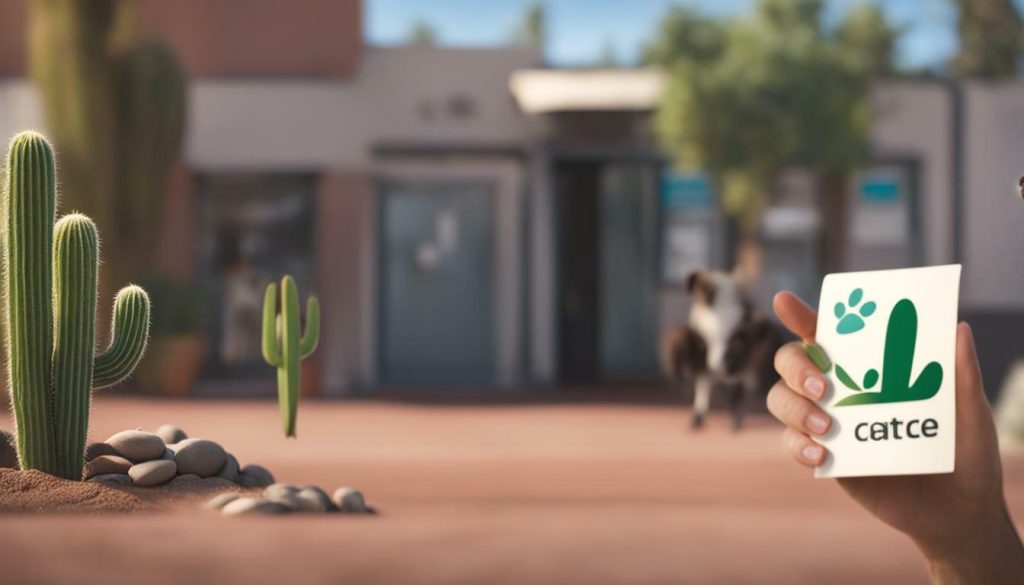
While dogs technically can eat cactus, it is not recommended due to potential risks and dangers associated with consumption. Feeding cactus to dogs can lead to injury from the sharp spines and stomach upset from the sap. Keeping cacti out of a dog’s reach is crucial to prevent accidental ingestion.
Furthermore, some cacti are toxic to dogs and can have hallucinogenic effects. If a dog consumes cactus, it is important to seek veterinary assistance. A veterinarian can remove any spines and provide further treatment if necessary to mitigate the potential effects of cactus toxicity.
Some examples of toxic cacti include peyote cactus, cholla, Peruvian torch cactus, and San Pedro cactus. As a responsible pet owner, you must be aware of these dangerous plants and ensure they are not accessible to your furry friend.
In addition to cacti, other holiday plants are toxic to dogs. Mistletoe, holly, daffodil, lily, amaryllis, yew, snowdrop, laurel, and poinsettia can all risk your pet’s health if ingested. It is vital to be cautious when introducing new plants into your home and to keep them out of your pet’s reach.
Remember, the well-being of our furry companions should always be a priority. While dogs may be curious about cacti and other plants, we are responsible for creating a safe environment for them. By being informed about the potential risks and dangers associated with cactus consumption, we can ensure the health and happiness of our beloved pets.
FAQ
Can dogs eat cactus?
While technically safe, it is not recommended to feed cactus to dogs due to the potential risk of injury from spines and the sap, which can cause stomach upset.
Are all cacti toxic to dogs?
Most cacti are not poisonous to dogs, but keeping them out of a dog’s reach is important due to their sharp spines. Some cacti, like peyote cactus, cholla, Peruvian torch cactus, and San Pedro cactus, are toxic and can have hallucinogenic effects on dogs.
Are Christmas cactuses toxic to dogs?
No, Christmas cactuses are not toxic to dogs. However, keeping them out of a dog’s reach is still important to prevent any potential accidents.
What other holiday plants are toxic to dogs?
Other holiday plants that are toxic to dogs include mistletoe, holly, daffodil, lily, amaryllis, yew, snowdrop, laurel, and poinsettia. Pet owners should be cautious when introducing new plants to their homes and keep them out of their pets’ reach.
What should I do if my dog consumes cactus?
If your dog consumes cactus, it is best to take them to a vet to remove any spines and for further treatment. The vet will be able to assess the situation and provide appropriate care.






